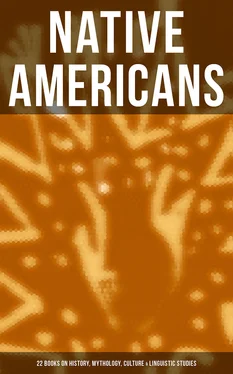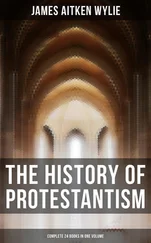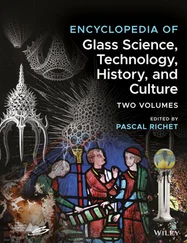As set forth in some detail by Dorsey, the ordination of the Siouan tribes extended beyond the hierarchic organization into families, subgentes, gentes, tribes, and confederacies; there were also phratries, sometimes (perhaps typically) arranged in pairs; there were societies or associations established on social or fiducial bases; there was a general arrangement or classification of each group on a military basis, as into soldiers and two or more classes of noncombatants, etc. Among the Siouan peoples, too, the individual brotherhood of the David-Jonathan or Damon-Pythias type was characteristically developed. Thus the corporate institutions were interwoven and superimposed in a manner nearly as complex as that found in the national, state, municipal, and minor institutions of civilization; yet the ordination preserved by means of the camping circle, the kinship system, the simple series of taboos, and the elaborate symbolism was apparently so complete as to meet every social and governmental demand.
Table of Contents
The Development Of Mythology
As explained by Powell, philosophies and beliefs may be seriated in four stages: The first stage is hecastotheism; in this stage extranatural or mysterious potencies are imputed to objects both animate and inanimate. The second stage is zootheism; within it the powers of animate forms are exaggerated and amplified into the realm of the supernal, and certain animals are deified. The third stage is that of physitheism, in which the agencies of nature are personified and exalted unto omnipotence. The fourth stage is that of psychotheism, which includes the domain of spiritual concept. In general the development of belief coincides with the growth of abstraction; yet it is to be remembered that this growth represents increase in definiteness of the abstract concepts rather than augmentation in numbers and kinds of subjective impressions, i.e., the advance is in quality rather than in quantity; indeed, it would almost appear that the vague and indefinite abstraction of hecastotheism is more pervasive and prevalent than the clearer abstraction of higher stages. Appreciation of the fundamental characteristics of belief is essential to even the most general understanding of the Indian mythology and philosophy, and even after careful study it is difficult for thinkers trained in the higher methods of thought to understand the crude and confused ideation of the primitive thinker.
In hecastotheism the believer finds mysterious properties and potencies everywhere. To his mind every object is endued with occult power, moved by a vague volition, actuated by shadowy motive ranging capriciously from malevolence to benevolence; in his lax estimation some objects are more potent or more mysterious than others, the strong, the sharp, the hard, and the swift-moving rising superior to the feeble, the dull, the soft, and the slow. Commonly he singles out some special object as his personal, family, or tribal mystery-symbol or fetich, the object usually representing that which is most feared or worst hated among his surroundings. Vaguely realizing from the memory of accidents or unforeseen events that he is dependent on his surroundings, he invests every feature of his environment with a capricious humor reflecting his own disposition, and gives to each and all a subtlety and inscrutability corresponding to his exalted estimation of his own craft in the chase and war; and, conceiving himself to live and move only at the mercy of his multitudinous associates, he becomes a fatalist—kismet is his watchword, and he meets defeat and death with resignation, just as he goes to victory with complacence; for so it was ordained.
Zootheism is the offspring of hecastotheism. As the primitive believer assigns special potency or mystery to the strong and the swift, he gradually comes to give exceptional rank to self-moving animals; as his experience of the strength, alertness, swiftness, and courage of his animate enemy or prey increases, these animals are invested with successively higher and higher attributes, each reflecting the mental operations of the mystical huntsman, and in time the animals with which the primitive believers are most intimately associated come to be regarded as tutelary daimons of supernatural power and intelligence. At first the animals, like the undifferentiated things of hecastotheism, are regarded in fear or awe by reason of their strength and ferocity, and this regard grows into an incipient worship in the form of sacrifice or other ceremonial; meanwhile, inanimate things, and in due season rare and unimportant animals, are neglected, and a half dozen, a dozen, or a score of the well-known animals are exalted into a hierarchy of petty gods, headed by the strongest like the bear, the swiftest like the deer, the most majestic like the eagle, the most cunning like the fox or coyote, or the most deadly like the rattlesnake. Commonly the arts and the skill of the mystical huntsman improve from youth to adolescence and from generation to generation, so that the later animals appear to be easier snared or slain than the earlier; moreover, the accounts of conflicts between men and animals grow by repetition and are gilded by imagination as memory grows dim; and for these and other reasons the notion grows up that the ancient animals were stronger, swifter, slier, statelier, deadlier than their modern representatives, and the hierarchy of petty gods is exalted into an omnipotent thearchy. Eventually, in the most highly developed zootheistic systems, the leading beast-god is regarded as the creator of the lesser deities of the earth, sun, and sky, of the mythic under-world and its real counterpart the ground or mid-world, as well as the visionary upper-world, of men, and of the ignoble animals; sometimes the most exalted beast-god is worshiped especially by the great man or leading class and incidentally by all, while other men and groups choose the lesser beast-gods, according to their rank, for special worship. In hecastotheism the potencies revered or worshiped are polymorphic, while their attributes reflect the mental operations of the believers; in zootheism the deities worshiped are zoomorphic, and their attributes continue to reflect the human mind.
Physitheism, in its turn, springs from zootheism. Through contemplation of the strong the idea of strength arises, and a means is found for bringing the bear into analogy with thunder, with the sun, or with the avalanche-bearing mountain; through contemplation of the swift the concept of swiftness is engendered, and comparison of the deer with the wind or rushing river is made easy; through contemplation of the deadly stroke of the rattlesnake the notion of death-dealing power assumes shape, and comparison of the snake bite and the lightning stroke is made possible; and in every case it is inevitably perceived that the agency is stronger, swifter, deadlier than the animal. At first the agency is not abstracted or dissociated from the parent zootheistic concept, and the sun is the mightiest animal as among many peoples, the thunder is the voice of the bear as among different woodland tribes or the flapping of the wings of the great ancient eagle as among the Dakota and ¢egiha, while lightning is the great serpent of the sky as among the Zuñi. Subsequently the zoic concept fades, and the constant association of human intellectual qualities engenders an anthropic concept, when the sun becomes an anthropomorphic deity (perhaps bearing a dazzling mask, as among the Zuñi), and thunder is the rumbling of quoits pitched by the shades of old-time giants, as among different American tribes. Eventually all the leading agencies of nature are personified in anthropic form, and retain the human attributes of caprice, love, and hate which are found in the minds of the believers.
Читать дальше












